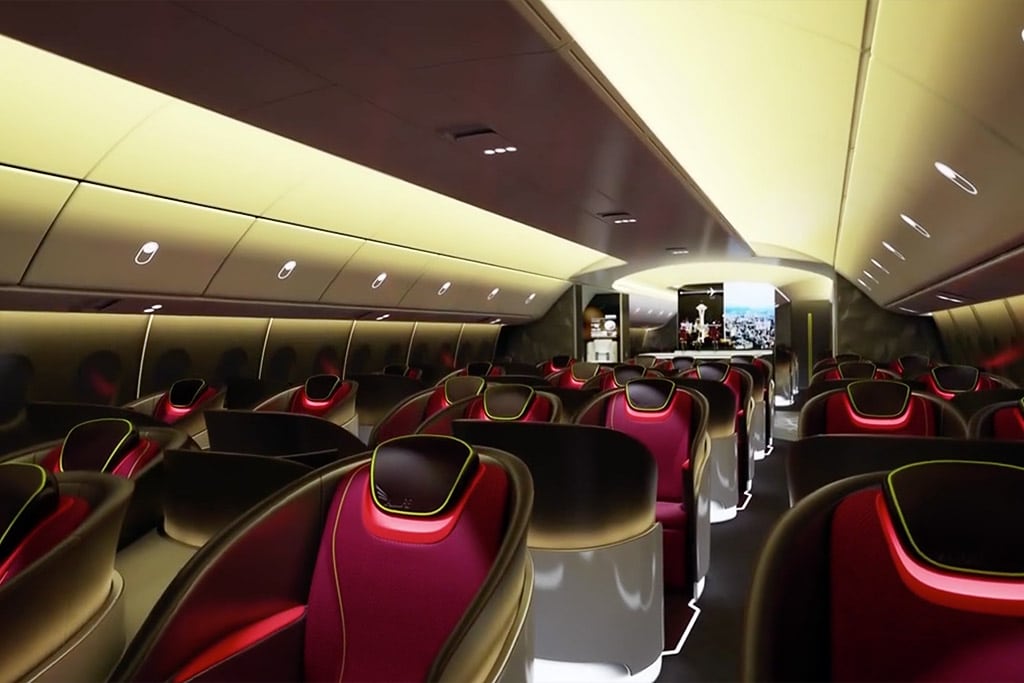Skift Take
It’s no surprise that many of this year’s Crystal Cabin nominees focus on innovations which reduce weight and redistribute space, but innovations and improvements are always welcome onboard.
Now in their 10th year, the Crystal Cabin Awards, given out during the Aircraft Interiors Expo in Hamburg, reveal the best of what we might expect from the future of flying.
This year, the awards received record submissions of 98 entries from 18 countries — 78 of which have now made to the shortlist.
While varied in their nature and approach, these submissions share one aim: to ensure a more efficient use of cabin space, while improving the onboard experience for passengers.
Based on submissions, here are the dominant trends driving tomorrow’s passenger experience:
1. BYOD is here to stay.
As the technology trends for personal electronic devices move at an accelerated pace, Bring Your Own Device (BYOD) entertainment options continue to grow. But embedded In-Flight Entertainment (IFE) manufacturers are also improving their offerings with high-end screens and high-tech systems.
2. In-Flight Wi-Fi is headed for what the Crystal Cabin Awards organizers describe as “massive expansion.”
In many ways, this expansion supports the BYOD trend. In-Flight Connectivity antennas don’t come cheap, but sometimes those costs can be off-set by lighter aircraft. Device streaming solutions save on the weight and reduce costs of offering entertainment on aircraft where none is available.
It will be fun watching these two top trends duke it out, but we expect airlines will offer a mix of entertainment options, especially on long-haul flights.
3. Inductive charging will rock the skies.
This trend is only starting, but industry innovators have presented concepts which will let us charge devices on surfaces without the needs of cables of plugs. BYOD entertainment will require more power, and cables can be a nuisance, so this is trend is very good news.
4. Immersive Virtual Entertainment is hanging in there for a good flight.
Because of relative costs, and some issues with onboard communications we’re still a bit skeptical about VR Headset IFE. But some airline experts believe it will take off, so we may could just be the wrong demographic for this one. Admittedly, our own Oculus trials looked something like this:
Adorable, but imagine that happening at 30,000 Ft.
5. Cabin lighting trend evolves from ambient mood-lighting to animated IFE.
Here again there’s some skepticism, but not on our side. While some have rationally pointed out the cost limitations of animated lighting as a passenger experience and design enhancement, Boeing is banking on its future. Airbus is too.
Because airlines are eager to get creative—without spending a fortune on hardware—we think passengers can expect more illuminated skies overhead and even animated in-flight updates.
6. More of your aircraft will be 3D printed
This one is common sense: 3D printing technology is revolutionizing manufacturing, with lighter-than-air sturdy structures. Possible applications for aviation components will keep growing.
7. Speaking of revolution, the cabin of the future is less about class and more about personal preferences.
Like having the far-less-than-1% debate our future from snowy summits, the concept of cabin class is so late 18th-century.
The elite have their own jets, but for those who still fly commercial, cabins built around traveller preferences promise a transformative travel future. Some proposals involve radical structural redesigns, others tear traditional airline service models down to build better ones. We’ll be pleased to see either, or both.
The Daily Newsletter
Our daily coverage of the global travel industry. Written by editors and analysts from across Skift’s brands.
Have a confidential tip for Skift? Get in touch
Tags: aircraft interiors, inflight, inflight entertainment, inflight Wi-Fi
Photo credit: A screen grab of a Boeing animation of a future cabin. Boeing
